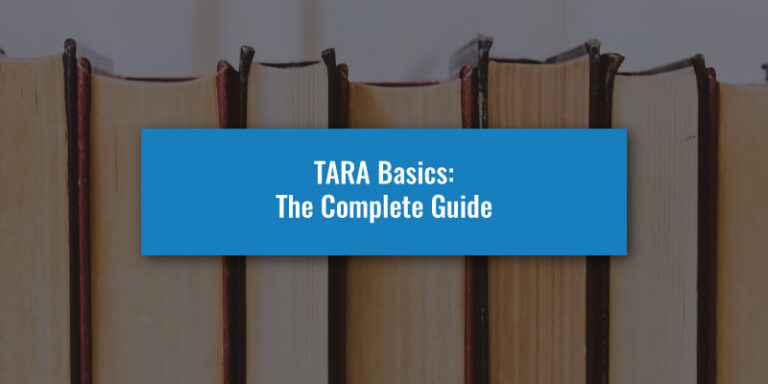Please be aware that the University of Oxford has cancelled the ELAT for 2024. English applicants will still be required to submit written work, but no admissions test will be sat for this admissions cycle.
Oxford has expressed its intention to revise the ELAT format and reintroduce it in future admissions cycles.
The ELAT is a pre-Interview Admissions Test for applicants to English undergraduate courses at Oxford.
But what is the ELAT and why do you have to sit it? In this guide, we go over everything you need to know for the admissions test and offer tips for getting a good score.
What is the ELAT?
The English Literature Admissions Test (ELAT) is a 90-minute Admissions Test taken by those applying to English at the University of Oxford.
Candidates have to sit the ELAT as it is used by Admissions Tutors as an indication of your potential to excel in the core skills needed to be successful on the degree.
These include how you analyse and closely read texts, how you structure and express your response to unfamiliar literary material, and how you manage your time.
This is not an exam where you will show off how much you know. Rather, it should be seen as an opportunity to showcase your ability to interpret and reflect on texts in a thoughtful, responsive, and convincing manner.
Early preparation is the key to a successful Oxbridge English application.
Writing the perfect Personal Statement, scoring highly on the ELAT and interviewing like a pro is how you get your dream Oxbridge English offer.
Discover our English Programme for comprehensive admissions support by clicking the button below to enrol and triple your chances of success.
What is the format of the ELAT?
For the ELAT, you will be given six passages on the same theme. The passages will be a mixture of different forms (there may be poetry, prose (fiction and non-fiction), and drama) and will date from different periods.
You will be asked to write an essay comparing two passages of your choice, and will be asked to carry out the following task:
Select two of the passages (a) to (f) and compare and contrast them in any ways that seem interesting to you, paying particular attention to distinctive features of structure, language, and style.
In the essay you should pay particular attention to elements such as:
- Language
- Imagery
- Allusion
- Syntax
- Form and structure
Who sits the ELAT?
You will have to sit the ELAT if you are applying to any of the following Oxford courses:
- Classics and English
- Classics II and English
- English and Beginners’ Czech (with Slovak)
- English and Beginners’ Italian
- English and Beginners’ Modern Greek
- English and Beginners’ Portuguese
- English and Czech (with Slovak)
- English and French
- English and German
- English and Modern Greek
- English and Portuguese
- English and Russian
- English and Spanish
- English Language and Literature
Do note that depending on the selected course, an additional Admissions Test may need to be taken, e.g., CAT or MLAT.
How to prepare for the ELAT
The ELAT does not require a lot of extra study. It is not a test of wide reading, nor is it based on the assumption that there are certain texts that all candidates should have read by this stage in their education.
This means that there are no recommended textbooks for further reading.
Read with a pencil in hand, scribble in the margins, underlining words and phrases that strike you, and keep notes in a reading journal.
This may also mean branching out from the usual novels, poems and plays you are used to reading and instead look to essays, religious texts, memoirs, philosophical texts, political tracts, and song lyrics.
You just want to make sure that you are able to respond to the wide variety of material that comes up.
When you feel confident with these skills, move on to attempting past papers to get a feel of having to do this critical reading under timed conditions.
Do note prior to 2018 candidates could compare two or three passages – when doing any of these papers just pick two passages to analyse.
How is the ELAT scored?
The maximum mark for the ELAT is 60. Each script is marked by two examiners.
Each examiner gives a mark out of 30 and the two marks are combined to give an overall mark out of 60.
Where there is a difference of five or more marks between the two examiners, a third examiner will mark the script. The overall score will be the two nearest marks combined.
Exam scripts are marked by external examiners, not by the university.
Scripts of those applying to Oxford will have a final grading decided by an invited panel of awarders including members of the Oxford English Faculty and selected representatives from schools and colleges.
The examiners will reward your ability to do the following:
- Respond perceptively to unfamiliar writing of different kinds
- Demonstrate skills of close reading, paying attention to the effects of the structure, language, and style
- Construct a well-focussed essay based on comparing and contrasting two passages
- Write fluently and accurately
ELAT Common Mistakes
A common mistake in the ELAT is to choose two texts and simply point out where they converge and where they are different – this is not enough.
Oxbridge use the ELAT as a test of ingenuity and proof that the applicant can argue a line of analysis. Therefore, you must be able to summarise your argument, or general line of thought, for the essay in one sentence.
Development of thought is also vital and thus you should be able to show how your argument and analysis progresses from the introduction to the conclusion.
Furthermore, do not feel like you are obliged to choose certain texts. Whether it be big names or older texts. Pick the texts that are the most interesting to you and that you feel you have the most to say about.
Make sure to play to your strengths.
ELAT Tips
Steer into difficulty
If there is something ambiguous or complicated in the extract, do not avoid or skip over it. Engage with it. If it is ambiguous, explain how and why. If the tone is uncertain, again explain the different possibilities.
No ‘right’ answer
It is important to remember that there really is no ‘right’ answer or interpretation, so see where your thoughts take you and use that as a starting point.
Be flexible
Do not try and force an essay on something you think is impressive and sophisticated, it is really important to be open to writing about anything. Write from inspiration.
Do not let your nerves get the better of you
It is a natural reaction but do not let your nerves and determination convince you that loads of extra work is necessary. You have the skills, and this is purely a chance to show them off.
Conclusion
You should now have a better idea of what the ELAT is and begin preparing for the Admissions Test.
There are no hidden complexities to this Admissions Test that only the super-geniuses among us can perceive. It really is as straightforward as it seems.
Oxford isn’t trying to catch you out – the examiners are creating an even baseline to assess everyone’s style on equal grounds.
It is best to think of the Admissions Test as another opportunity to show the Admissions Tutors how impressive your ability to argue analytically and produce a coherent argument is, rather than as another hurdle to your application.
Our expert tutors will guide you to Oxbridge English success.
Applying to Oxbridge is immensely competitive, and you must give yourself the best chance of success. We help you craft the perfect Personal Statement, achieve a highly competitive ELAT score and teach you how to Interview effectively – covering all areas of your Oxbridge application.
Discover our Oxbridge English Premium Programme for comprehensive admissions support by clicking the button below to enrol and triple your chances of success.







